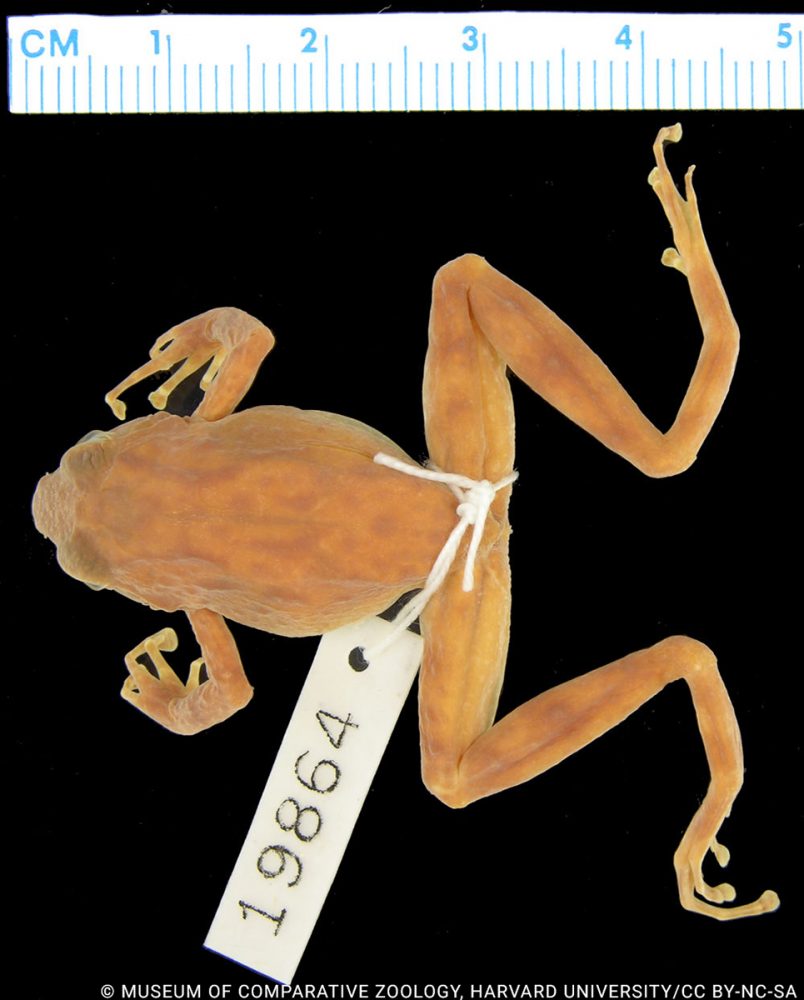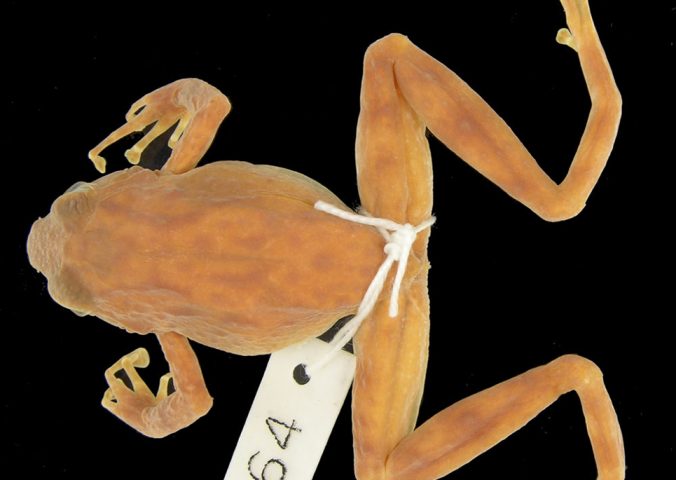About
There have been numerous surveys to locate Du Toit’s torrent frog since its last record in 1962, but all attempts have failed to find the species.
A single specimen was recorded in 1934 and one other in 1962 in the Suam River, but no individuals have been recorded for over 50 years. This suggest Du Toit’s torrent frog may be extinct. However, this could also be due to the difficulty of surveying the preferred habitat of this species, which comprises fast-flowing streams and waterfalls.
Du Toit’s torrent frog is one of around 12 species within the Petropedetidae family, which diverged from all other amphibians in the Late Cretaceous, more than 70 million years ago. This group started to evolve separately from the rest of the extant amphibians 5 million years before the extinction of the dinosaurs, which makes them as distantly related to other frogs as pigs are to whales!
The area from which Du Toit’s torrent frogs are known is outside protected areas and is now mostly farmland. The montane forest in the region is under threat from logging, charcoal burning and the use of agrochemicals. However, suitable habitat still remains for this species to potentially persist in the nearby Mt. Elgon National Park and the Kenya Forest Service managed land. Given the disappearance of other montane species from humid regions of the tropics, the role of chytridiomycosis in the decline of this species cannot be discounted.
- Order: Anura
- Family: Petropedetidae
- Population: Possibly Extinct
- Trend: decreasing
- Size: 31mm
EDGE Score
Distribution
This species is found on the Kooitobos River in the northeast of Mount Elgon in Kenya and also along the Suam River, which divides Kenya and Uganda at the northeast base of Mount Elgon. Its known elevation range is 2,100-2,200 metres above sea level.
Habitat and Ecology
This species is associated with seeps and fast-flowing streams and montane forests. Breeding is likely to be similar to other species in genus, with eggs laid on wet rocks close to torrential streams and waterfalls, with tadpoles developing on the rocks, out of the water.




